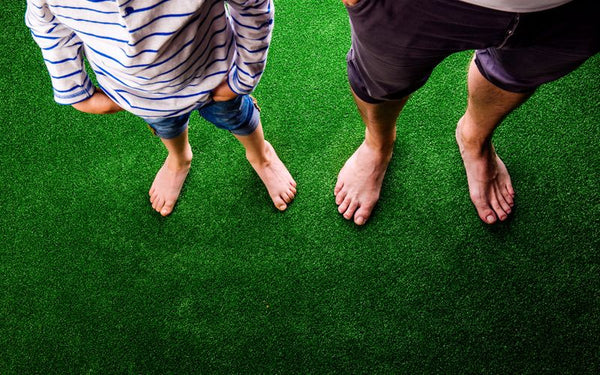The melting point of artificial grass is one of the crucial features of fake turf. It indicates how much heat the lawn can handle when exposed to hot temperature. However, it is more than that. In this post, we will discuss its adverse effects once the grass has reached its melting temperature. However, you need to know first how the fake turf can exceed the artificial grass melting point.
How the Faux Grass Reaches Its Melting Point
Several factors are causing this phenomenon. One is the direct application of heat. It happens when you light up a fire pit or cook outdoors. Sparks could fly all over the place. Once they fall on your plastic lawn, the turf could reach the melting point of artificial grass.
Nevertheless, the leading cause of this damage is your Low-E windows. The purpose of these windows is to control the temperature inside your home. That way, you can save energy, especially during summer.
The glazing used by these windows reflects the heat away. Because it cannot enter your abode, the glass window magnifies the light and concentrates it on your fake lawn. As a result, it reaches the melting temperature of artificial turf.
However, your Low-E window is not the only one responsible for this damage. In fact, all objects that have reflective properties can melt your fake grass. That is because these agents re-emit heat, which causes the lawn to disintegrate.
What Happens When Your Turf Has Reached Its Melting Point
Once your field hits the melting point of artificial grass, the following signs will appear:
Discoloration
It is one of the obvious indications that your synthetic turf starts melting. You will see some brown patches on the surface of your field, making your property ugly.
Excessive Water Consumption
Fake grass is naturally hotter than the real lawn, as it is composed of plastic materials. Hence, when the weather is too hot, you have to irrigate the area from time to time. If you do this daily, then it means that your artificial turf is melting.
What Is the Best Way to Stop This Damage?
There are several solutions for this problem. Nonetheless, the best tactic is to use a window film for artificial grass. However, do not just get any window tint. Make sure that it is Turf Guard Window Film.
To learn how our window screens can stop reaching the melting point of artificial grass, you may visit our website and buy our products.









